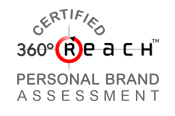
A common question I hear is, “How do I add a part-time job to my resume and/or LinkedIn profile?”
The deeper, often not asked, questions are:
What will people THINK?
Will this hurt my reputation [personal brand]?
If you are “mining the gap” and hesitate to tell the story of your part-time job, ask yourself WHY?
Does it feel too risky? Or just too vulnerable? It’s okay, I get it.
First, I recommend reading the body of work by Brene Brown or at least watching her TED talks. She is an author, speaker, researcher and Texan. Yes, that final fact would make her cool in my book, even if her body of work was not amazing!
Brown’s research is on connection, vulnerability and shame. Tough topics, right?
My bet is you will come to a new understanding of your feelings and concerns about telling the story of your part-time job by watching the TED talk “Listening to Shame”. Stop and invest 20 minutes in yourself right now.
Second, for most of us, telling our story is hard. And, when the story is not unfolding as you planned or wished, it is HARDER.
At least that’s the way it was for me for years, and sometimes still is. It is also what I hear over and over again from my clients who are seeking a new job and the road gets a little bumpy.
You see, I deal in facts first. Then, I sort out my feelings, which come from my thoughts. I own my feelings and feel I am accountable for those feelings. I don’t (at least I try not to) play the blame or shame game. This was not always the way it was for me. It is how I choose to live my life now and I love life that way.
I grew up with the “What will people THINK?” question. It was a question I learned to ask myself out of habit.
The habit, by the way, included asking the question and then not bothering to find out what people really thought. Instead, I answered the question with my own thoughts. If you wonder what people are going to think — go ask them! That way you will actually know what they think.
If you can’t, or don’t want to ask people, here is a process to help shift the feeling of “OH MY GOSH! What will people THINK?” to something more positive: think of what questions an interviewer might want to know about your part-time job. Questions such as:
- Why this part-time job is important to you?
- How does the job align with your goals and values?
- What problems do you solve on this job that connect to problem the potential employer needs solved?
Finally, I think the easiest way to “mine the gap” and tell the story of your part-time job is to look at the data, sort out your thoughts and emotions and decide how to tell your story.
Telling your career story is sharing your data and your soul, and that can be and feel vulnerable. Stories are merely data with a soul.
Facts alone don’t always paint the whole picture. When people read or hear ‘just the facts,’ questions may come up, allowing data to show its soul within a story, helping answer the unanswered questions. Bottom line? A story helps bring the data alive and helps create a connection — a human connection.
Sometimes the connection will be positive, sometimes not. When you are able to understand your feelings, you will be better able to listen to what the interviewer is THINKING about and you have a better chance to connect.
Understanding your feelings and why you took the part-time job, as well as how and what it says about you, will help you tell the story. Ask yourself the tough questions. Your answers will help you tell your story.
Post the story of your part-time job or comments below. If you need help to tell your story contact me.
 Stepping forward into a transition or transformation may feel uncomfortable. When you have been doing something for a long time, feeling pulled to explore something new and different may find you feeling unsteady — without your sea legs. For many successful people stepping forward in this way is an act of courage and vulnerability.
Stepping forward into a transition or transformation may feel uncomfortable. When you have been doing something for a long time, feeling pulled to explore something new and different may find you feeling unsteady — without your sea legs. For many successful people stepping forward in this way is an act of courage and vulnerability.
 A common question I hear is, “How do I add a part-time job to my resume and/or LinkedIn profile?”
A common question I hear is, “How do I add a part-time job to my resume and/or LinkedIn profile?”


